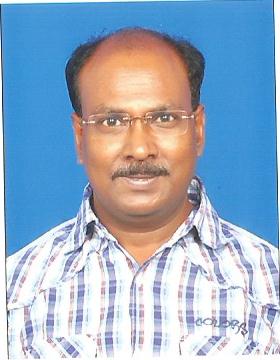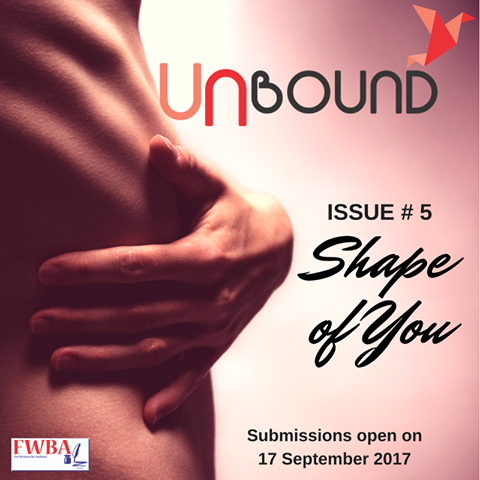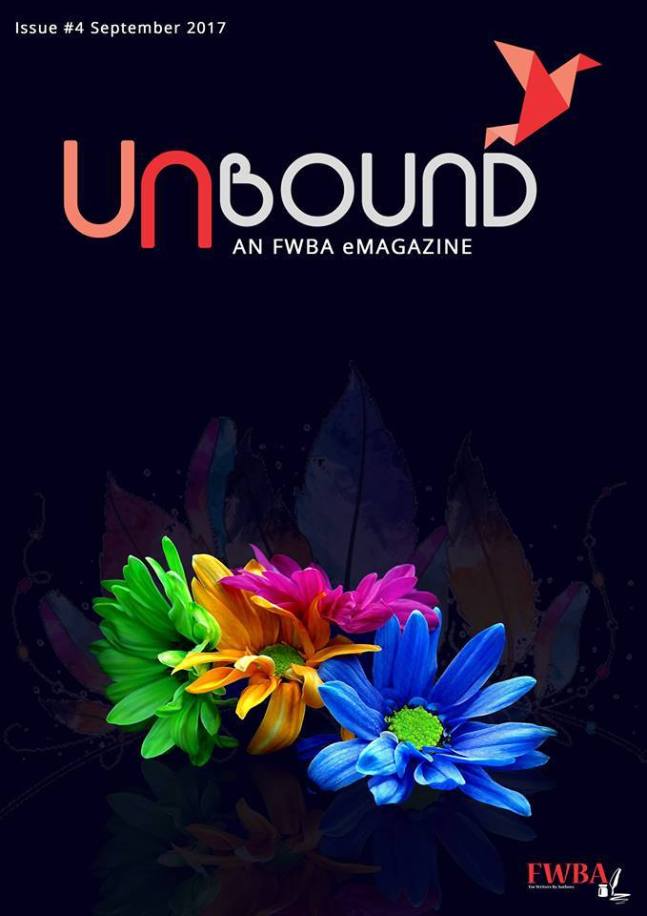
I first encountered Saikumar Yerubandi when we both wound up published in the second issue of UnBound Emagazine, the creation of my favorite literary group—“For Writers by Authors” (FWBA.) A mutual love of paleontology, (for which the idea of a book anthology has been kicked around from time to time,) and interest in human rights sparked a pleasant online friendship. We would both later be published in the next UnBound issue…and, only a few days ago, the one after that as well.
The subject material of Yerubandi’s latest work “Mah Color, My Life” hit me on a very deep level and only half-way through reading it, rather than simply giving his piece a review, I knew that I wanted to do an actual feature. Simply put, the autobiographical story has more than writing appeal. There is a strong social and educational importance to the piece which needs to be shared for the greater good of both the international able-bodied and disabled community.
Without further ado, the interview:
G: To an audience who has never read you before, can you say a few words about yourself?
S: A dark balding South Indian who refuses to accept that I am on the wrong side of 50. A farmer who became a geologist by accident whose heart still beats for his village. I write short stories and flash fiction more as a hobby. (I just completed my flash fiction #48 last week “the chota peg series.”) God forbid someday I might seriously think of becoming a writer. Readers be warned.
G: What is your preferred genre and what type of writing format do you typically use in order to bring it to life?
S: The genre that comes naturally to me is humour. I love to write horror too. The topics I normally write are related to day to day social issues. What I can’t do is Romance, I mean, the genre.
G: In your short story, “Mah Color, Mah Life,” (which recently debuted in UnBound Emagazine Issue 4, and is being promoted by Kalaage,) you talk about various difficulties that you have had to overcome at different times in your life because you are color blind. Several times, you reference hardship in your early school years. Do you feel that teachers are properly educated about the different perception of color blind students?
S: Well, frankly in India, even to this day, probably half the teachers are not even aware of this handicap in the children. Probably the inability to differentiate shades of colours is attributed to the low IQ of the child. It is only in recent times the schools are appointing student counselors to understand issues like Dyslexia, dysgraphia, ADHD, and so on. I hope that colour blindness is given equal importance.
G: What advice would you give a teacher who has a color blind student in their class for the first time?
S: The first thing the teacher needs to do is understand the trauma that the child goes thru vis-a-vis teasing and bulling by other students on his inability to differentiate colours, and guide and help the child to deal with it by learning to laugh at oneself. And sensitizing the other classmates.
G: By profession, you are a geologist. I would imagine that color blindness must make the identification of many rocks extremely difficult, yet you persevere nonetheless. What words would you have to skeptics regarding the capabilities of the color blind in the work force?
S: If early on in life if you identify your handicap, avoid jobs that require you to deal with colours. You’ll save yourself and others a lot of uncomfortable situations. But, having said that, take this disability as a challenge in your personal hobbies.
G: Regarding driving a vehicle, which presents issues as well, is there any advice that you have for color blind children as well as their parents as to what to expect?
S: Well since there not much a person afflicted with colour blindness can do about it, the onus lies on the state to make the signals more user friendly…like, instead of just the colours red, green, and yellow, the signals should have a pictorial display as well. (It is already in vogue in many countries.) Alternatively just follow a vehicle right in front of you and do what he does. This is of course fraught with the risk of following a bad driver who jumps signals, like it happened to me once.
G: Despite repeated publications by UnBound Emagazine in the past, when they announced the theme for this issue, (“A Riot of Colors,”) you almost did not enter. Do you feel that many other color blind people have this hesitation to talk about the impact of color in general, let alone actual color blindness, in their lives, even with respected friends and colleagues?
S: Yes. I am sure most colour blind people would rather push it under the carpet, rather than expose themselves to their handicap fearing ridicule. I guess most people in general try to hide those not so visible handicaps to friends and colleagues. Having said that, yes, the writers are a bold breed and they don’t hesitate.
G: In the past, you have written short stories whose fictional characters deal with gender violence, women’s equality, and animal rights. In the future, will your fiction have color blind characters also?
S: Hmm…that’s a good idea. My only dilemma would be whether to make it a serious social issue or a humorous one.
G: In fiction, have you encountered any positive, accurate portrayals by other authors of color blind characters that you can direct readers to?
S: Unfortunately, I haven’t come across any one writing on this subject. I am not even sure if there are any groups dealing with this. I would love to browse the net for the same.
G: If not, what effect does this have on you, both as a color blind person, and as a writer?
S: I am glad I wrote on this subject and happy to see people liked it, and hope that in future more writers affect by this handicap will feel free to do so. Not only colour blindness but on other invisible disabilities too.
G: Do you feel that the public in general has a large degree of misconceptions about the realities of being color blind? How do you feel the disability is generally portrayed?
S: Insensitive people will only find it as another subject to make fun of, for example lisping, squint etc. Like me, the person suffering from this disability will try to hide it and pretend that all is well.
G: Though not color blind, as a person with a disability, I identified a great deal with many of the emotional aspects described in your piece. Do you plan on promoting what you’ve written for UnBound Emagazine in disability groups online for the benefit of those who do not, as you do, have gifts with the written word?
S: I would like to see this piece being shared on as many disability groups as possible and let people know it is nothing to be ashamed of. I accept both the gifts of the Almighty—the ability to write and the colour blindness with equal grace.
G: Now that you have publicized your disability in a literary format, how does it make you feel?
S: I feel relieved. I no longer need to be ashamed of my disability and I also realized not all people are insensitive to a fact that people can’t differentiate between, say, red and brown and it is NOT because they are idiots.
G: Two questions that I ask all fellow people with a disability: is there anything that you consider a positive aspect of your physical difference? Are there any ways that it has helped influence your life for the better?
S: My own disability have made me more sensitive and appreciative to people with different disabilities and their resilience to overcome them, some of which are more serious, and we have inherited them and not out of choice.
G: What is next on the writing horizon for Saikumar Yerubandi?
S: For the next prompt for #UnBound magazine (theme: “The Shape of You”)…I plan to write something different. Probably a mythology explained through Science fiction. Hopefully, if I can block out Ed Sheeran’s tune from playing non-stop in my head while doing so.

G: In conclusion, speaking only for myself, I must admit that, prior to “Mah Color, Mah Life,” I was pretty ignorant about the condition. Now that I’ve learned a bit about it, I would really like to see color blind characters begin to take their rightful place in fiction—particularly when written by authors who are color blind themselves and therefore definitely know what they are talking about. There is no reason for color blindness, like so many other disabilities, to be shoved into the closet any longer. In an era when racism and skin colorism are both finally being highlighted for the full wrong that they are, disablism, however, still seems to find itself largely being ignored by warriors for social justice. Disabled authors have the ability to change that, even if it is one short story at a time. As Yerubandi can certainly prove.
“Mah Color, Mah Life” may be read here:
https://www.kalaage.net/issue/67/issue_1505143424105

Yerubandi’s previous UnBound publication “Sri Rama Raksha” in issue #2 here:
https://www.smashwords.com/books/view/656583

Yerubandi’s two stories in Issue #3, “Eknath Lonekar,” and “Chicken Little,” maybe be found here:
And, Yerubandi’s blog, which might, in the future, feature other short stories and his flash fiction “Chota Peg” series here:
